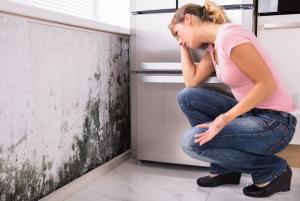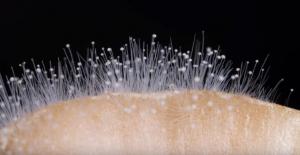How Mould can Affect the Home Environment in a Negative Way
Many people are finding mould in their homes after La Nina but they don't know what to do about it. Here are some simple steps which will get rid of mould.
Firstly - what is mould and why does it sometimes grow in our homes? Mould is a type of fungi which grows best in damp and poorly ventilated areas - so if a home has a lot of excess moisture and isn't ventilated well, mould will grow. Mould reproduces by making spores and these airborne spores are commonly found in both indoor and outdoor environments.
When people live in a mouldy environment, they experience a lot of negative health effects. These range from a runny or blocked nose to irritation of the eyes and skin and sometimes wheezing. For people with asthma, inhaling mould spores can cause an asthma attack. If people are exposed to mould for a long period of time, they can develop a severe mould infection, usually in the lungs.
As well, long-term exposure to mould can affect people’s immune system and this can trigger more serious problems later on down the track. Some people develop a condition known as Mast Cell Activation Syndrome (MCAS) where they have severe allergies to many foods.
What signs show there's mould in a home?
If there is something that looks like soot or dirt stuck to the walls, window frames or ceilings – this is likely to be mould. Some moulds appear white and thread-like, while others occur in clusters of black, dark green, grey or brown rings and spots. As well, if there’s a damp, musty odour coming from parts of the home - including the floors or cupboards - this is a clear sign the home has mould.
Another tell-tale sign is dark spots on clothes or the carpet. As well, if there's something which looks like fungus growing on the furniture - such as the lounge or the underside of the dining room table – this is often mould. If the people living in the home are prone to allergies, asthma flare-ups or persistent coughs or colds – this can be a sign that this home could have a mould infestation.
How can mould be prevented from growing in a home?
One of the most important things that must be done to prevent mould from growing in a home is to make sure there’s no excess moisture in the home. This means, if there are any leaks in the roof, walls, windows or plumbing – these need to be fixed and remediated immediately. As well, it's a good idea to add mould inhibitors to the paints used before any painting is done.
If a home is ever flooded accidentally – for example by a bath overflow – it's important to make sure this is dried out within 24–48 hours. Bathrooms need to be cleaned with effective mould-killing products – such as the SAN-AIR range. If the carpet or upholstery become wet, remove them as they will create a breeding place for mould. Keep carpet out of places like bathrooms or basements because this will create a breeding ground for mould as well.
The next most important thing to do is to keep the humidity levels in a home as low as possible. The less moisture there is in the air in a home - the less moisture there is available for mould to use to grow. Using air conditioners or dehumidifiers will help keep the humidity to a lower level. It should be no higher than 60% at all times. By using a simple meter bought from a hardware store, it's possible to check a home’s humidity levels so you know if a home is too humid.
It’s also important to make sure a home is well ventilated. This means the air in the home should flow freely so it's a good idea to open the windows as much as possible to allow fresh air to come in. When cooking, use the exhaust fan to get rid of the steam and make sure the fan is used in the bathroom during a shower and then for a full 20 minutes after the shower. Also, make sure the hot air from the clothes dryer is vented outside the home. When the air in a home is managed this way, the air will stay fresher and drier.
What needs to be done if there's mould in a home?
If there is evidence of mould growing in a home, this needs to be cleaned up immediately and then it's important to find out how excess moisture is getting into the home. But keep in mind, the mould in the shower recess is not the mould to be worried about. It’s likely that everyone has some mould growing inbetween the tiles in their shower and this can be cleaned up by using some SAN-AIR mould-killing spray.
If you wipe down the walls in the shower with a squeegee after each use and keep the fan on for 20 minutes after each shower, the mould in this area shouldn’t get out of control.
But if mould is found in other parts of the home such as on the walls, the carpet, the furniture etc, then this means the home should be tested for mould. A mould test from SAN-AIR will show if there is mould and if so - get a professional company to test the home to check how extensive it is. The company may be able to help remove it or recommend a company to do this.
While it's possible to clean up small amounts of mould yourself, it’s always better to hire a professional mould removal company to fix a mould infestation as mould is a very toxic substance and it's important to have the right training and equipment to do the job properly.
Daniel Massaioli
SAN-AIR
+61 426 090 071
sales@sanair.com.au
Visit us on social media:
Facebook
YouTube
SAN-AIR Products and How They Work to Kill Mould in Your Home
Legal Disclaimer:
EIN Presswire provides this news content "as is" without warranty of any kind. We do not accept any responsibility or liability for the accuracy, content, images, videos, licenses, completeness, legality, or reliability of the information contained in this article. If you have any complaints or copyright issues related to this article, kindly contact the author above.



